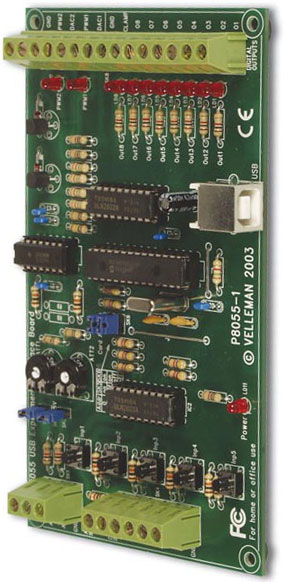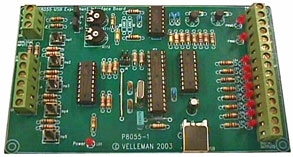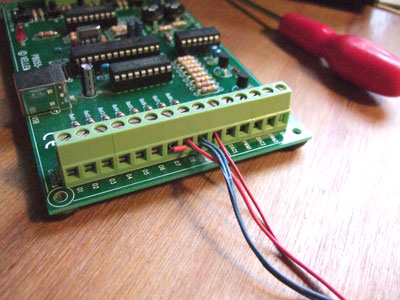| |  |
Now you can control up to 40 digital outputs and monitor up to 28 digital inputs, via your RISC OS USB ports
If you have an Iyonix, an A9 Home, a Simtec USB podule or an STD Unipod, then the K8055 (aka VM110) I/O board from Velleman opens up a wide range of control possibilities.
Each K8055 board offers eight digital, two digital-to-analogue and two pulse-width modulated outputs, as well as five digital and two analogue inputs. As up to four boards can be addressed by one computer, you can quadruple those figures if you need to have the maximum number of control and monitoring channels at your disposal.
So where do the 40 outputs and 28 input figures come from in the headline, you may ask? Well, the two D-to-A outputs on each board can double as extra digital channels, as can the two analogue input lines, making 10 outputs and 7 inputs per board.
The one limitation of the K8055 is its rather low speed. The minimum I/O cycle time is about 20ms - meaning about 50 read/write cycles per second. To be fair, that's as much a limitation of the USB 1.1 standard as the board itself. USB 1.1 can manage about a 10ms minimum cycle time, but throw in conversion overheads and some handshaking and that stretches to 20ms with the K8055.
|  |
 |
The board is available in kit form from a number of online suppliers, including Maplin, for about £30 and sometimes appears second-hand too, ready-built at a reduced price.
Dave Higton has written a RISC OS version of the PC program that accompanies the board (see links section). I use a heavily hacked, cut-down single-tasking version for my own control projects. |
The digital 'outputs' are actually open-collector current sinks, not sources, which means they can't drive anything direct (a common misconception judging by some of the queries I've seen on discussion boards). Instead, when driven high, each output effectively completes the circuit for your device by connecting it to ground (zero volts).
The outputs can sink about 100mA each, at up to 50v. If you need to sink more current than that you can wire outputs in parallel to share the load. So all eight outputs linked together to form a single channel could sink up to 800mA. The pic at left shows channels 7+8 linked to sink a maximum of 200mA.
|
 |
<< RisControlAll content on this website is © Neil Fazakerley or its originators |
|



